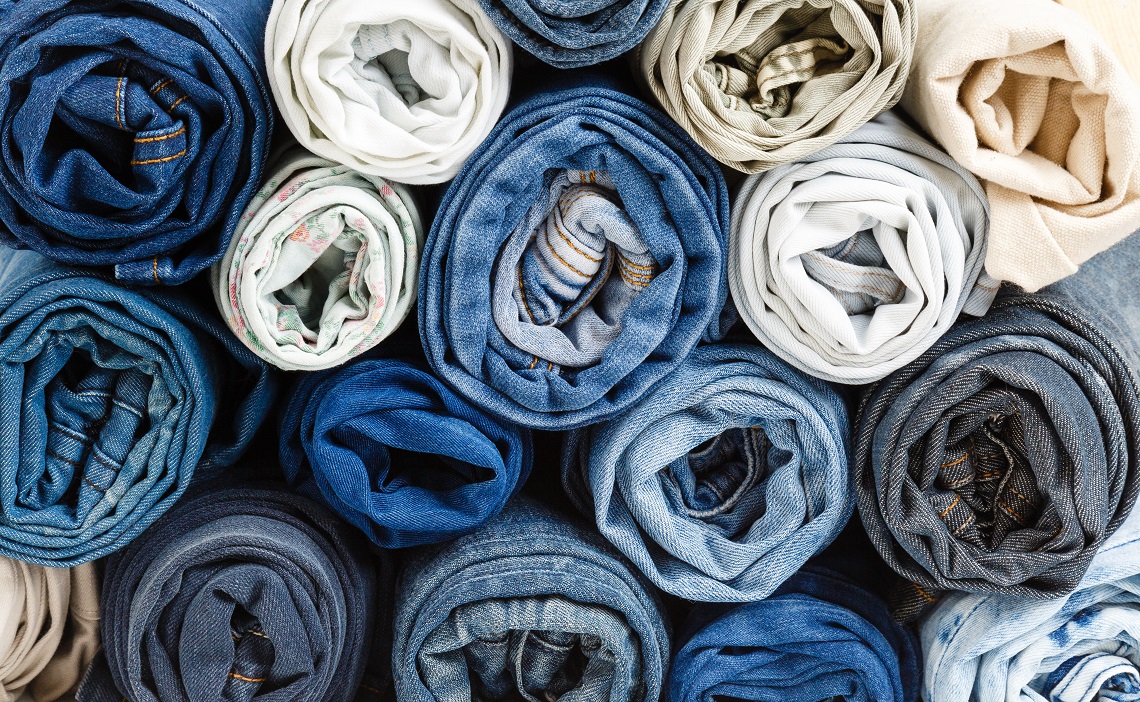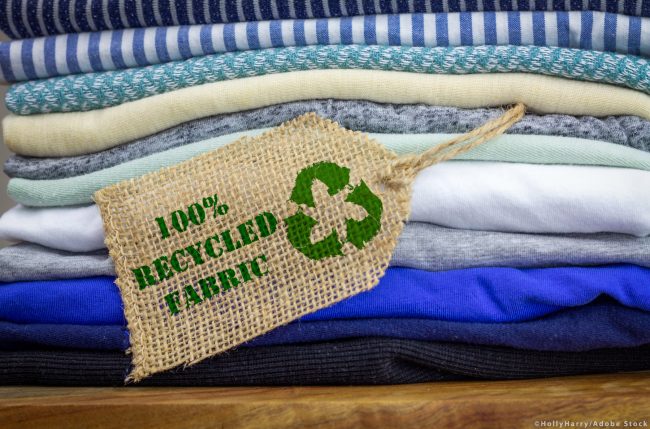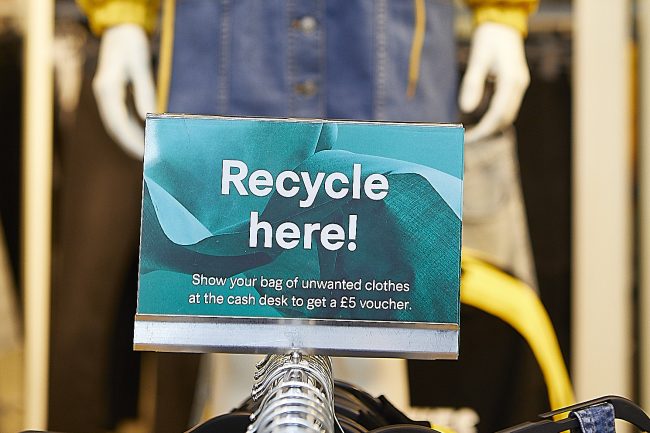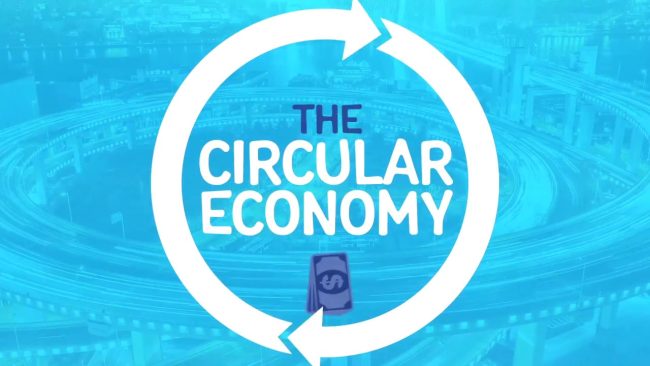
Sustainability with circularity
Though textiles and apparels sector is a huge industry worth $1.5 trillion, it also accounts for about 10% of the global greenhouse gas emissions. By focusing on a circular economy, textile firms in India are looking to adopt the best sustainable business practices, says Rakesh Rao.
Textiles is one of the oldest industries known for supporting economic growth and generating employment for a large number of people. Rated as the leading foreign exchange earning sector for India, the textile and apparel sector is estimated to grow to $ 190 billion by FY26, according to IBEF research. However, textile and apparel manufacturing sector – traditionally a labour-intensive industry – is known for using large volumes of water for dyeing, washing, and printing. In addition, post-consumer wastes are leading to flooding landfills, waterbodies and choking drainage systems, etc.

Globally, there is a big demand for products made by firms employing sustainability-driven practices. India is competing with other APAC countries – like Bangladesh, China, Vietnam, Pakistan, Sri Lanka and Indonesia – for becoming the world’s leading textile manufacturing hub. The global textile and apparel sector is estimated at $ 1.5 trillion. However, the sector accounts for about 10% of the global greenhouse gas emissions, which exceeds those from the aviation and maritime industry clubbed together. Hence, sustainability is no more an option, but it is an imperative.
“The deteriorating global environment has put the theme of sustainability at center stage in every industry, including textiles. The global textile industry emits 1.2 billion tonnes of CO2 equivalent each year, close to the level of emissions from the automobile industry. Hence, there is a growing demand for sustainably produced garments. This is also reflected in the sustainability commitments made by multiple global brands, including Levi’s, H&M, Adidas, and Hugo Boss. In this context, textile companies need to understand that even though sustainably produced products may not secure a premium price, being sustainable might become an important selection criterion for customers. Therefore, forward-thinking companies will be aware of and invest in sustainability,” said the CII-Kearney report.
Prashant Agarwal, Managing Director, BRFL Textiles Pvt Ltd (BTPL), added, “With apparels and garments being produced and used at scale, the need of the hour is for textile companies to adopt sustainable measures that do not harm the environment. For the textile industry in particular, sustainability is not just a measure to protect the environment, but also a way to drive innovation in the industry. New sustainability innovations can also give rise to new products and manufacturing methods that can transform the sector at large.”

Industry’s role
As India continues to make great strides in global trade through favourable international environment and support of the government, there are many key trends shaping the swiftly expanding textile sector. “One of the key factors driving the same is the concept of sustainability, which is one of the most popular trends to take over the world of retail. Sustainability is an extremely important factor when it comes to the future of this industry, and India can play a major role in spearheading this swiftly growing segment,” said Vikash Agarwal, Finance President, Rupa & Co Ltd.
Many Indian textile manufacturing companies have finalised their sustainability goals and track essential parameters such as energy, emissions, water use, and waste. However, for a meaningful impact it is important to educate small and unorganised players (who form the backbone of India’s textile industry) about the environmental impact and encourage them to adopt sustainable practices.

According to CII-Kearney report, following steps can be taken to make small and unorganised players a part of the green journey:
- Industry associations should play a big role in raising awareness and auditing
- Established companies can be mapped to small players for mentorship on sustainability, and corporate social responsibility points could be accredited for this service
- Sustainability goals must be included in long-term business planning with gradual organizational transformations
According to Vikash Agarwal, sustainable fashion has taken the markets by storm owing to unique concepts such as its design led strategies and shortened supply chain. “The trend will not only move India towards growth, but will also elevate its importance internationally owing to the environmental consciousness it promotes. As the trend continues to transform the textile business, it is the best time for the country to embrace sustainable fashion, and charter a new path for the future by integrating futuristic technology with traditional Indian textiles,” he said.
Changing consumer behaviour is also tilting the market in the favour of green products. According to a survey by Business Research Company in 2020, over 66% of customers stated that they consider sustainability when purchasing a luxury product. “Sustainability is driving the future of the segment, with people becoming increasingly conscious of their lifestyle to lessen the environmental impact. The modern Indian customer is also looking for more, including recycling of the product, expecting environment-friendly packaging and is even willing to pay more for brands that follow healthy environmental practices, and have an eco-friendly structure. Thus, sustainability is going to be on top of the mind of consumers in the coming future. Many brands are adapting to a new eco-friendly fashion through a sustainable lifestyle, supporting the industry to recycle its own goods and promoting self-reliance,” added Vikash Agarwal.

Circular economy
A circular economy – which focuses on reusing and recycling products and on sustainable business practices – is seen by experts as a tool for helping the textile and garment industry to prosper without excessive environmental damage. According to the Circular Apparel Policy Innovation Lab, a project of the Delhi-based think tank Centre for Responsible Business (CRB), in a circular economy, materials and energy circulate in loops within the value chain. It is opposed to the take-make-dispose linear system.
There is a need to create awareness and encourage investments to extend the lifeline of clothes to reduce per capita clothes consumption and thereby reduce CO2 emissions. For example, emissions drop by as much as 64% if a T-shirt is worn three times rather than buying three t-shirts and wearing them once.
Technological advancements that have taken place over the years have helped the textile industry to reduce water used for dyeing by 40-50%. Nowadays, carbon dioxide-based dyeing technology is available, which does not require water. Similarly, a Pune-based KBCols Sciences Pvt Ltd has developed eco-friendly technology for textile dyeing. Polyester is generally dyed at 130 deg C, but with KBCols Sciences’ technology, the required temperature has been reduced to 85 deg C.
BRFL Textiles Pvt Ltd has pioneered a new sulphur dyeing process by continuous dyeing – which does not utilise water. This innovative sustainable process has been introduced in the industry for the first time. “Keeping sustainability in mind, we have also utilised multiple measures to limit carbon emission and enable a stringent water recycling process across our operations. As a result of our sustainability measure, we are saving upto 4 million litres of water everyday by reusing 50% of the effluent water. We are consistently aiming to increase the recycling level and hope to recycle close to 7.2 million litres of water per day in the near future,” explained Prashant Agarwal.
Companies also, especially in textile clusters, are using treated municipal water to reduce the use of freshwater. For example, at the Tiruppur textile and garment cluster in Tamil Nadu, a zero liquid discharge (ZLD) regulation is in force — about 96% cent of the process water, salts and dyes is recovered.
But more needs to be done.
According to CII-Kearney report, apparel companies could explore multiple ways to promote circular economy:
- Higher usage of recycled materials: India could be a global leader in “circular textiles” with investments into recycling of pre- and post-consumer waste.
- Upcycling pre-consumer wastes to create textile products: Upcycling uses manufacturing waste without it being disposed and, therefore, leads to resource conservation, less carbon footprints, saving energy, and saving landfill space.
- Providing detailed, material-specific instructions aimed at extending garment life cycles on their websites
- Focused consumer promotions: A recent survey indicates that consumers are likely to buy more sustainable products if brands highlight the benefits and give rewards for buying sustainable fashion products.
“India’s textile and apparel industry is the sixth largest in the world and second largest employment sector. A large part of the textile waste generated is sent to the landfill and incinerated instead of being recycled or reprocessed. There is a need to ‘self-disrupt’ existing practices and transition to a more circular approach. Promoting a common understanding is therefore crucial from a sustainable development perspective for the entire textile sector in India,” said Ashish Dikshit, Managing Director, Aditya Birla Fashion and Retail Limited, which has tied up with Germany’s GIZ to boost circular economy in India. Aditya Birla Fashion and GIZ will collaborate to introduce material innovation, reduce inputs of harmful substances, increase textile-to-textile recycling, develop alternatives to plastic packaging, and foster traceability.
Need for a government push
The Indian textile industry has long been plagued by issues around sustainability. The industry is dominated by a large number of micro, small and medium enterprises (MSMEs) majority of who are yet to adopt sustainability practices. However, industry and the government are trying to transform this.
Devyani Hari, Director, Centre for Responsible Business (CRB), believes that for long term growth and sustainability in the sector, the government must integrate circular economy principles in the incentive schemes. “Under the PM MITRA scheme (PM Mega Integrated Textile Region and Apparel), ‘environmental and social impact’ has been designated as one of the five factors that would be looked at while shortlisting locations for setting up textile parks. While this is a good start, circularity principles should be applied right at the design stage for the parks. Adequate water treatment and reuse mechanisms must be put in place, along with provisions for wastewater exchange/industrial symbiosis,” she stated.
Ramanuj Mitra, Senior Program Officer, CRB, added, “Most of the existing apparel and textile units in the country are micro or small – this is a handicap against implementing sustainable practices. Efforts must be made at the cluster level or sub-cluster level, such as building common infrastructure for these units. Awareness and capacity building programs would go a long way in acquainting these businesses with latest trends and equipment for sustainable manufacturing. Concessional lending or customised lending products will support the industry in adopting sustainable practices.”
CII-Kearney report suggests that the Government should set up the upcoming mega textile parks (MITRA parks) as green parks where electricity is sourced predominantly via renewable means. Additionally, subsidies should be provided for existing parks and establishments to make renewable energy the most competitive source of power. Such steps will also help the government in realising its goal of 450 GW of installed renewable energy capacity by 2030.
The report also suggests introduction of legislation to prohibit imports of illegally sourced raw material to further bolster sustainability initiatives. Several countries – such as the US, the European Union, South Korea, and Australia – have already implemented legislation to prevent the imports of illegally harvested timber and wood-based products.
According to CII-Kearney report, government and industry can contribute to circularity by following steps:
- Develop centralised old garment collection facilities, and partner with relevant technicians to recycle them.
- Implement awareness programs to educate MSMEs (power looms, garmenting units, and hosiery manufacturers) about the benefits of increasing the longevity of a garment.
- Run widespread consumer campaigns to improve awareness about sustainably produced garments.
- Support non-governmental organisations and local associations with promotion campaigns of indigenous products, such as khadi and bamboo products.
There is a need to explore the possibility of creating a 10-year circular textiles road map to encourage the companies to commit to reducing their greenhouse emissions. India should strive to become the recycling hub for Asia as it will also make India a dominant player in sustainable raw material and eventually, a sustainable manufacturing powerhouse, according to CII-Kearney report.
According to the latest findings of the Textile Exchange, out of the 111 million metric tonne (MMT) of fibres produced in 2019, less than 20% were deemed to be sustainable. The Textile Exchange estimates about 48 million tonnes of clothes being disposed annually. Furthermore, textile-to-textile recycling rate at below 1% presents a major challenge as well as an opportunity.
“Reuse is a key aspect of sustainability. The linear business model using virgin materials and generating waste is unsustainable in the long run. On the demand side, the commitments made by international brands and retail to incorporate sustainable fibres in general, and end of life recycled fibres into fashion design, give a clear impetus. With abundant availability of pre- and post-consumer textile waste, India offers tremendous opportunities to international brands and retailers to source sustainable apparels. The existence of well-developed integrated hubs at Panipat and Tirupur, indigenous machinery manufacturing capability and initiatives of leading textile mills, the textile recycling industry is set for growth,” said Navdeep Singh Sodhi, Partner, Gherzi Textil Organisation, Switzerland.
Walk the talk
The Union Ministry of Textiles is aiming to increase India’s exports of textile and apparels to $ 100 billion by 2026. To achieve this goal, sustainability should be one of the core pillars of any policy interventions as customers in the developed countries (the main targeted destinations for Indian goods) are increasingly making their buying decision based on green parameters. Being part of a circular value chain will give an added USP to Indian products.
“We believe that industries will move into a complete circular economy in a few years as it opens up various economic opportunities and gives birth to enhanced operational efficiencies,” said Prashant Agarwal.
The idea of circular economy though challenging, it is the best bet for truly sustainable future. It makes more sense for a country like India which needs high economic growth for generating jobs for its growing population without degrading the environment.
We should walk the eco-friendly path and not just talk about it.




